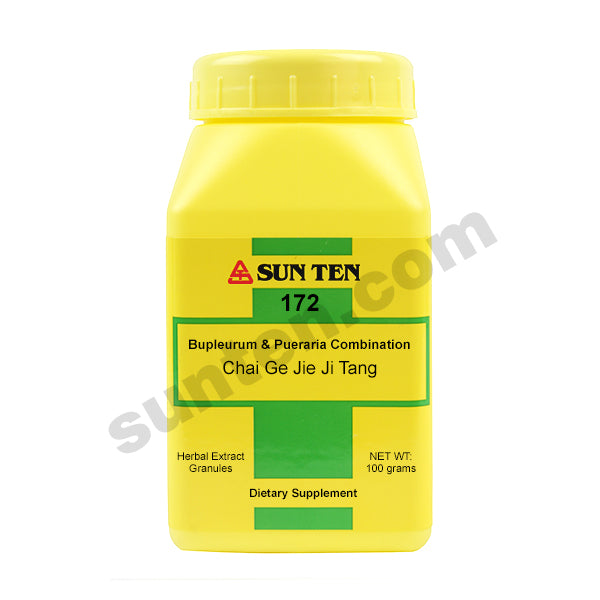Chai Ge Jie Ji Tang
Bupleurum & Pueraria Combination Granules | 柴葛解肌湯
Practitioners: Please LOGIN to view the wholesale price. This item can only be purchased by a licensed practitioner. Find a practitioner
Ingredients: White peony root (bai shao), Gypsum (shi gao), Kudzu root (ge gen), Fragrant Angelica (bai zhi), Notopterygium root (qiang huo), Bupleurum root (chai hu), Platycodon root (jie geng), Scute root (huang qin), Jujube fruit (da zao), Ginger root (sheng jiang), Chinese licorice root (gan cao).
| Mandarin: 柴葛解肌湯 Pin-Yin: Chai Ge Jie Ji Tang English: Bupleurum & Pueraria Combination Romaji: Saikatsu Geki To Kanji: 柴葛解肌湯 Kampo: No |

